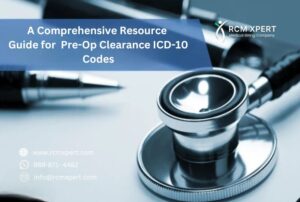As a healthcare provider, navigating the complex world of medical billing can feel like trying to solve a Rubik’s cube blindfolded. One area that often trips up even seasoned professionals is the correct use of cardioversion CPT codes. In this comprehensive guide, we’ll demystify the process and help you avoid common pitfalls. So, let’s roll up our sleeves and dive into the nitty-gritty of cardioversion coding!
What is Cardioversion and Why Does it Matter?
Before we jump into the coding maze, let’s refresh our understanding of cardioversion. It’s a procedure used to restore a normal heart rhythm in patients with certain types of arrhythmias, most commonly atrial fibrillation. By delivering a controlled electric shock to the heart, cardioversion can be a real lifesaver – literally!
But here’s the kicker: if you don’t code it correctly, you might not get properly reimbursed for your life-saving work. That’s why getting the cardioversion CPT code right is crucial for both patient care and your practice’s financial health.
The ABCs of Cardioversion CPT Codes
Okay, let’s get down to brass tacks. The main CPT codes you’ll be dealing with for cardioversion are:
- 92960: Cardioversion, elective, electrical conversion of arrhythmia; external
- 92961: Cardioversion, elective, electrical conversion of arrhythmia; internal
Seems simple enough, right? Well, not so fast! There’s more to it than meets the eye.
External vs. Internal Cardioversion: Know the Difference
The key to choosing between 92960 and 92961 lies in understanding the difference between external and internal cardioversion.
External Cardioversion (92960)
This is the more common procedure. It involves placing electrode pads on the patient’s chest and back, then delivering the shock through these pads. Think of it as the cardioversion equivalent of jumping a car battery – except way more precise and, you know, on a human heart.
Internal Cardioversion (92961)
This is the heavy artillery of cardioversion. It’s used when external cardioversion doesn’t cut the mustard. In this procedure, a catheter is inserted through a vein and guided to the heart. The shock is then delivered directly to the heart muscle. It’s more invasive but can be more effective in stubborn cases.
Common Pitfalls in Cardioversion Coding
Now that we’ve got the basics down, let’s talk about where providers often stumble. Avoiding these pitfalls can save you headaches (and dollars) down the line.
Pitfall #1: Confusing Cardioversion with Defibrillation
This is a classic mix-up. While both procedures involve shocking the heart, they’re used for different purposes and have distinct CPT codes. Defibrillation (CPT code 92950) is used in emergency situations to treat life-threatening arrhythmias, while cardioversion is typically a planned procedure for non-life-threatening arrhythmias.
Pitfall #2: Overcoding Multiple Attempts
Here’s a tricky situation: what if the first cardioversion attempt doesn’t work, and you need to try again? You might be tempted to code for each attempt, but hold your horses! The CPT code for cardioversion covers all attempts performed during a single session. So, whether it takes one shock or five, you’ll only code it once.
Pitfall #3: Neglecting to Code for Evaluation and Management
Remember, the cardioversion CPT code only covers the procedure itself. If you evaluated the patient before the procedure or provided significant pre- or post-procedure care, you might be able to bill for evaluation and management (E/M) services separately. Just be sure to document thoroughly and use the appropriate modifier (usually -25) to indicate a significant, separately identifiable E/M service.
Modifiers: The Secret Sauce of Accurate Coding
Speaking of modifiers, these little two-digit codes can make a big difference in your billing accuracy. Here are a few you should know:
- Modifier -22: Increased Procedural Services
- Modifier -25: Significant, Separately Identifiable E/M Service
- Modifier -59: Distinct Procedural Service
Use these modifiers judiciously to provide more context to your cardioversion coding and ensure proper reimbursement.
Documentation: Your Best Friend in Coding
I can’t stress this enough: good documentation is the backbone of accurate coding. When it comes to cardioversion, make sure your documentation includes:
- The type of arrhythmia being treated
- Whether the cardioversion was external or internal
- The number of attempts made
- The energy levels used for each attempt
- The patient’s response to the procedure
- Any complications or adverse reactions
Remember, if it’s not documented, it didn’t happen – at least as far as billing is concerned!
Staying Up-to-Date: The Ever-Changing Landscape of Medical Coding
Just when you think you’ve got it all figured out, the rules change. Welcome to the world of medical coding! CPT codes and guidelines are updated annually, so it’s crucial to stay informed. Here are a few tips:
- Subscribe to coding newsletters or journals
- Attend regular coding workshops or webinars
- Join professional coding organizations
- Regularly review updates from CMS and major insurance providers
Real-World Scenario: Putting It All Together
Let’s walk through a typical cardioversion scenario to see how all this information comes together.
Dr. Smith sees a patient, Mrs. Johnson, who has persistent atrial fibrillation. After evaluating her condition and discussing treatment options, they decide to proceed with elective cardioversion. Dr. Smith performs an external cardioversion, which takes two attempts to successfully convert Mrs. Johnson’s heart rhythm to normal sinus rhythm.
Here’s how Dr. Smith would code this encounter:
- 92960 for the external cardioversion procedure
- 99213-25 for the evaluation and management service (assuming a level 3 established patient visit)
Notice that even though it took two attempts, Dr. Smith only codes 92960 once. The -25 modifier on the E/M code indicates that it was a significant, separately identifiable service from the cardioversion procedure.
The Bottom Line: Why Accurate Coding Matters
At the end of the day, accurate coding isn’t just about getting paid (although that’s certainly important!). It’s about:
- Ensuring proper patient care documentation
- Facilitating accurate medical research and statistics
- Maintaining compliance with healthcare regulations
- Supporting the financial health of your practice or institution
By mastering the ins and outs of cardioversion CPT codes, you’re contributing to the overall quality and efficiency of healthcare delivery. It might seem like a small piece of the puzzle, but it’s an important one!
Wrapping Up: Your Roadmap to Cardioversion Coding Success
We’ve covered a lot of ground, from the basics of cardioversion CPT codes to common pitfalls and best practices. Here’s your quick cheat sheet for cardioversion coding success:
- Know your codes: 92960 for external, 92961 for internal
- Understand the procedure thoroughly
- Document, document, document!
- Use modifiers wisely
- Stay updated on coding changes
- When in doubt, consult a coding expert
Remember, practice makes perfect. The more familiar you become with these codes and concepts, the easier and more natural the coding process will become.
So, the next time you’re faced with a cardioversion procedure, take a deep breath, review your notes, and code with confidence. You’ve got this!





